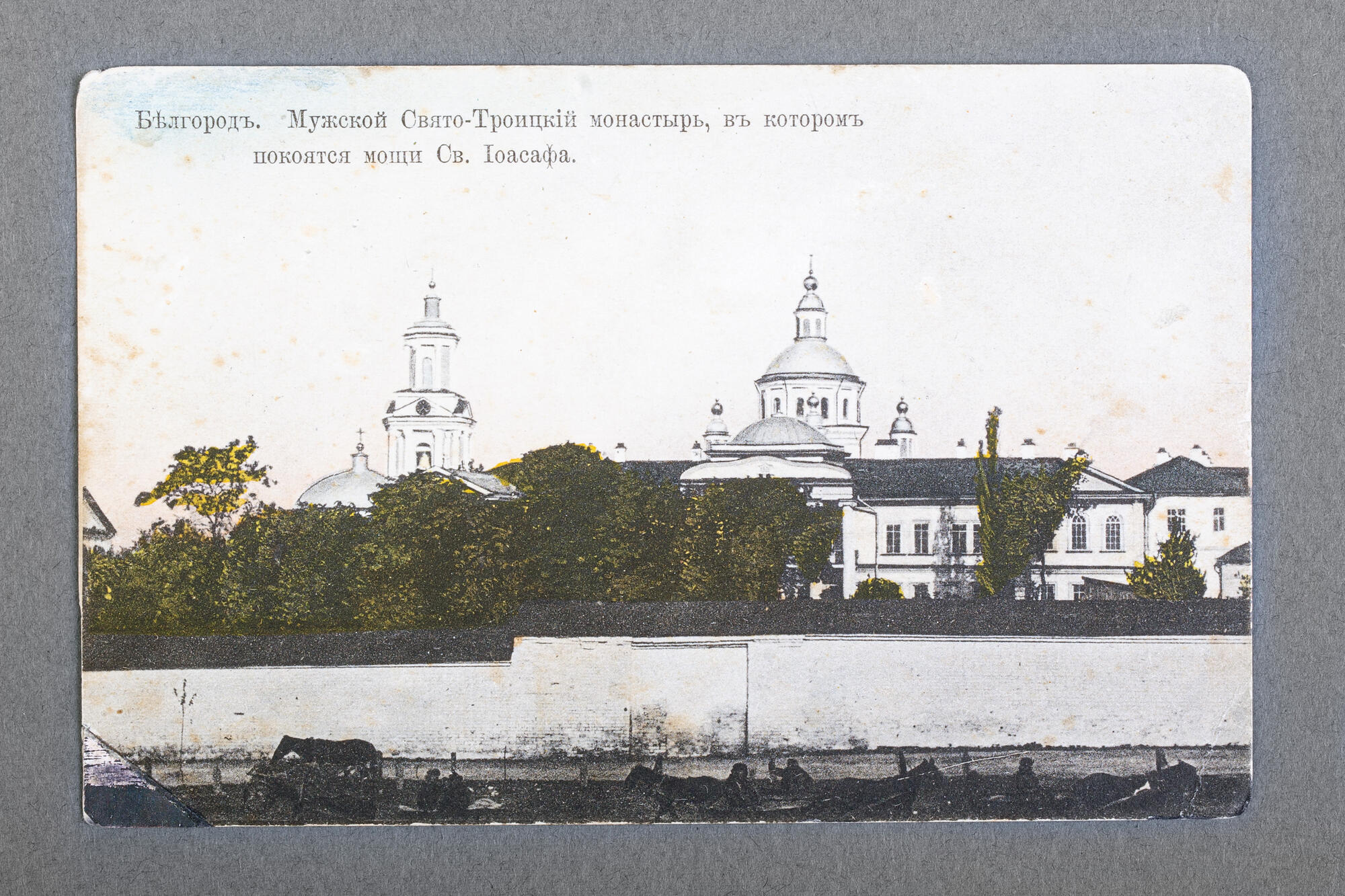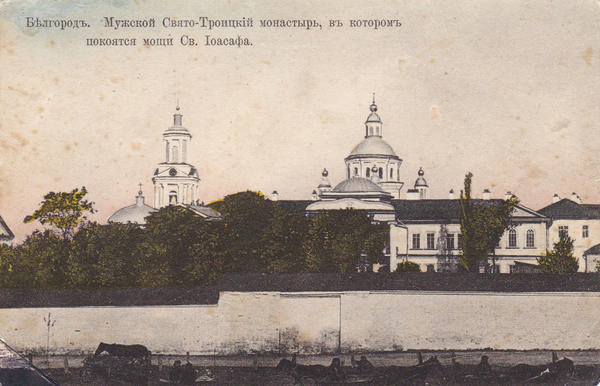At the beginning of the 19th century, the Weinbaum Printing House, located in a mansion on Korochanskaya Street since 1903, was one of the most remarkable places in Belgorod. Its owner Alexander Alexandrovich Weinbaum, a merchant of the 2nd guild, could offer almost all types of printing products. Postcards with views of old Belgorod — buildings, squares, streets, temples, and monasteries — are of particular value. The postcards with the views were printed in Stockholm. In a review, Andrey Firsov wrote the following about them, “In the Weinbaum store, you can buy postcards with views of Belgorod. A complete collection of 37 postcards costs only 1 ruble 25 kopecks.”
Postcards with views of the Holy Trinity Monastery were very popular.
In 1911, a significant event took place in Belgorod — the celebrations on the occasion of the canonization of Saint Joasaph. Since that time, numerous pilgrims began to come to the city to venerate the holy relics and buy the postcards as a souvenir.
In total, over fifty versions of postcards were issued: some depicted a general view of the monastery, others depicted the views of either the Znamenskaya Church or the Holy Trinity Cathedral, the monastery bell tower, the fraternal cemetery located on the territory of the monastery with tombstones on the graves of hegumens and bishops, and the chambers of the prelate. Some photographs were taken indoors: a reliquary with the relics of Saint Joasaph and the interior of the Holy Trinity Cathedral.
At the end of the 16th century, a wooden church, consecrated in honor of the Life-Giving Trinity, was erected on Melovaya Gora, giving rise to the famous monastery. Between 1690 and 1707, a stone cathedral was erected in the same place, which later (in 1833) became a cathedral of a cenobitic second-class monastery. The building is a harmonious composition of four five-sided towers adjacent to the central quadrangle. The quadrangle is crowned with a dome on a round massive low tholobate. The cathedral facades are decorated with built-in semi-columns of fine workmanship, and the windows are decorated with simple platbands and decorative rectangular alcoves.
Postcards with views of the Holy Trinity Monastery were very popular.
In 1911, a significant event took place in Belgorod — the celebrations on the occasion of the canonization of Saint Joasaph. Since that time, numerous pilgrims began to come to the city to venerate the holy relics and buy the postcards as a souvenir.
In total, over fifty versions of postcards were issued: some depicted a general view of the monastery, others depicted the views of either the Znamenskaya Church or the Holy Trinity Cathedral, the monastery bell tower, the fraternal cemetery located on the territory of the monastery with tombstones on the graves of hegumens and bishops, and the chambers of the prelate. Some photographs were taken indoors: a reliquary with the relics of Saint Joasaph and the interior of the Holy Trinity Cathedral.
At the end of the 16th century, a wooden church, consecrated in honor of the Life-Giving Trinity, was erected on Melovaya Gora, giving rise to the famous monastery. Between 1690 and 1707, a stone cathedral was erected in the same place, which later (in 1833) became a cathedral of a cenobitic second-class monastery. The building is a harmonious composition of four five-sided towers adjacent to the central quadrangle. The quadrangle is crowned with a dome on a round massive low tholobate. The cathedral facades are decorated with built-in semi-columns of fine workmanship, and the windows are decorated with simple platbands and decorative rectangular alcoves.



